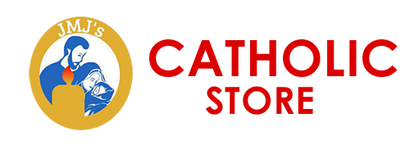Size (in inches):4.375 x 5.9375 (A-6)
Inside Text:
Blank inside.Bible Verse:
2 Corinthians 13:13The grace of the Lord Jesus Christ, the love of God, and the communion of the Holy Spirit be with all of you.
Item Details:
The Christian doctrine of the Trinity proclaims the central belief of one God in three persons: Father, Son, and Holy Spirit. This image by Brother Claude Lane, O.S.B. is inspired by the description of the Ancient One in the Book of Daniel 9:7, where God the Father is depicted in glory and seated on a throne. God the sun is depicted here as Christ Emmanuel, “God with us." The Holy Spirit, as often described in the New Testament, is shown in the form of a dove, reminding us that “the Spirit blows where it chooses..." (John 3:8).
Icon greeting cards are single-fold cards printed on heavy stock, 4.38" x 5.93". The cards are blank inside for your own message or custom imprint and have an explanation of the history and symbolism of the icon printed on the back.
Image Origins
The Christian doctrine of the Trinity proclaims the central belief of one God in three persons: Father, Son, and Holy Spirit. Classical iconography has developed two types of depictions of the Holy Trinity. The first, based on Genesis 18, is often called The Old Testament Trinity: three strangers visit Abraham and Sarah at Mamre and promise that they will have a son. The Fathers of the Church saw this event as the first manifestation of the Trinity. In icons based on it, the Trinity appears as three angels seated at a table. The second type of Trinity icon takes its inspiration from three Old Testament passages: Daniel 7:9, where God the Father is depicted as “the Ancient of Days,” and Isaiah 7:14 and 9:6, which prefigure the eternal sonship and the Incarnation of Jesus Christ. There are actually two paradigms within this second category; this one is called the co-inhering type. The Ancient of Days holds Christ Emmanuel on his lap, and the Son, in turn, holds a mandorla which envelops the Holy Spirit in the form of a dove. This icon is called Paternitas, or “Fatherhood,” and sometimes referred to as the New Testament Trinity. This image, written by Br. Claude Lane, OSB, is based on a fourteenth century Russian icon.
Theology and Symbolism
The theology of iconography rests firmly on the idea that icons may be painted and venerated because God has revealed himself through the Incarnation by taking on human flesh. God the Father is rarely depicted in iconography; the Russian model for this icon was probably developed in lands bordering the West where there were fewer inhibitions about representations of God the Father. This image is inspired by the book of Daniel 9:7, “As I watched thrones were set in place, and an Ancient One took his throne; his clothing was white as snow, and the hair of his head was like pure wool; and his throne was fiery flames, with wheels of burning fire.” Later Christian theologians would see this “Ancient of Days” as the Father who is eternal. He is seen in glory, seated on a throne. At his feet is a wheel of fire, with wings and eyes all over it, representing one of the seven choirs of angels (see Ezekiel 1:16-21). Within his halo are two intersecting stars, one red and one blue, representing the intersection of his earthly and heavenly realms. The scroll in the divine hand represents God’s plan for the whole universe. Around his halo are the letters of the word Abba, the name which Jesus taught us to use to call upon the Father. The Second Person of the Trinity is depicted here as Christ Emmanuel, “God with us,” eternally begotten and one in being with the Father. His garments are gold, and his posture reflects that of the Father. Christ's halo is inscribed with a cross (the nimbus) and the Greek letters omicron, omega, nu, spelling "HO ON"; in English, this becomes, "He who is," as in, “He who is, who was, and is to come at the end of the ages.” The abbreviated Greek form of the name Jesus Christ, "IC XC,” appears near his halo. The Holy Spirit is often described in the Gospels as taking the form of a dove, and is thus shown as such in Christian art. The Spirit is called “Advocate,” a title given him by Jesus. The Spirit is held in a medallion of uncreated light called a mandorla. The dove is shown with wings ready for flight, reminding us that “the Spirit blows where it chooses…but you do not know where it comes from or where it goes” (John 3:8). The Trinity emanates from a mandorla and on either side there are six-winged seraphim. Seraph means “fiery one,” a member of the choir of angels that perpetually looks upon the face of God and attends to him at the altar of heaven (see Isaiah 6:2). This icon helps us to understand that the Trinity is not merely a theory that has little impact on our lives, but a profound reality that invites us to participate in its mystery. God’s love is necessarily poured out in relationship; God is relationship and love! Out of love the Son became flesh and suffered to save us. We too, are called to share in this invitation to extend divine love to family, friends and even strangers.
Please call us and let us know your order number and that it is less than 30 days when bought and once we have confirmed your return by email or phone call with a number we will receive the item.

